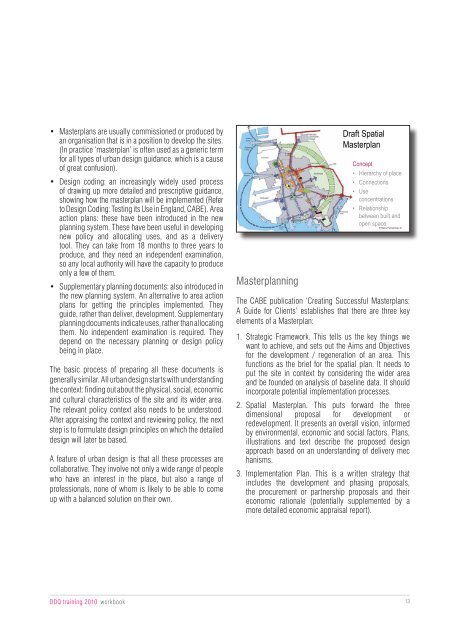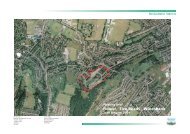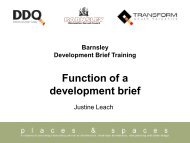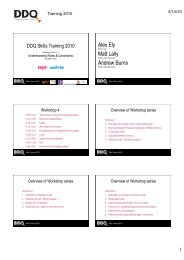Handbook: Workshop 1 (PDF) - DDQ - Delivering Design Quality
Handbook: Workshop 1 (PDF) - DDQ - Delivering Design Quality
Handbook: Workshop 1 (PDF) - DDQ - Delivering Design Quality
Create successful ePaper yourself
Turn your PDF publications into a flip-book with our unique Google optimized e-Paper software.
• Masterplans are usually commissioned or produced byan organisation that is in a position to develop the sites.(In practice ‘masterplan’ is often used as a generic termfor all types of urban design guidance, which is a causeof great confusion).• <strong>Design</strong> coding: an increasingly widely used processof drawing up more detailed and prescriptive guidance,showing how the masterplan will be implemented (Referto <strong>Design</strong> Coding: Testing its Use in England, CABE). Areaaction plans: these have been introduced in the newplanning system. These have been useful in developingnew policy and allocating uses, and as a deliverytool. They can take from 18 months to three years toproduce, and they need an independent examination,so any local authority will have the capacity to produceonly a few of them.• Supplementary planning documents: also introduced inthe new planning system. An alternative to area actionplans for getting the principles implemented. Theyguide, rather than deliver, development. Supplementaryplanning documents indicate uses, rather than allocatingthem. No independent examination is required. Theydepend on the necessary planning or design policybeing in place.The basic process of preparing all these documents isgenerally similar. All urban design starts with understandingthe context: finding out about the physical, social, economicand cultural characteristics of the site and its wider area.The relevant policy context also needs to be understood.After appraising the context and reviewing policy, the nextstep is to formulate design principles on which the detaileddesign will later be based.A feature of urban design is that all these processes arecollaborative. They involve not only a wide range of peoplewho have an interest in the place, but also a range ofprofessionals, none of whom is likely to be able to comeup with a balanced solution on their own.Skills Training 2010MasterplanningDraft SpatialMasterplanConcept• Hierarchy of place• Connections• Useconcentrations• Relationshipbetween built andopen space© Matrix Partnership LtdThe CABE publication ‘Creating Successful Masterplans:A Guide for Clients’ establishes that there are three keyelements of a Masterplan:1...Strategic Framework. This tells us the key things wewant to achieve, and sets out the Aims and Objectivesfor the development / regeneration of an area. Thisfunctions as the brief for the spatial plan. It needs toput the site in context by considering the wider areaand be founded on analysis of baseline data. It shouldincorporate potential implementation processes.Spatial Masterplan. This puts forward the threedimensional proposal for development orredevelopment. It presents an overall vision, informedby environmental, economic and social factors. Plans,illustrations and text describe the proposed designapproach based on an understanding of delivery mechanisms.Implementation Plan. This is a written strategy thatincludes the development and phasing proposals,the procurement or partnership proposals and theireconomic rationale (potentially supplemented by amore detailed economic appraisal report).<strong>DDQ</strong> training 2010 workbook13






